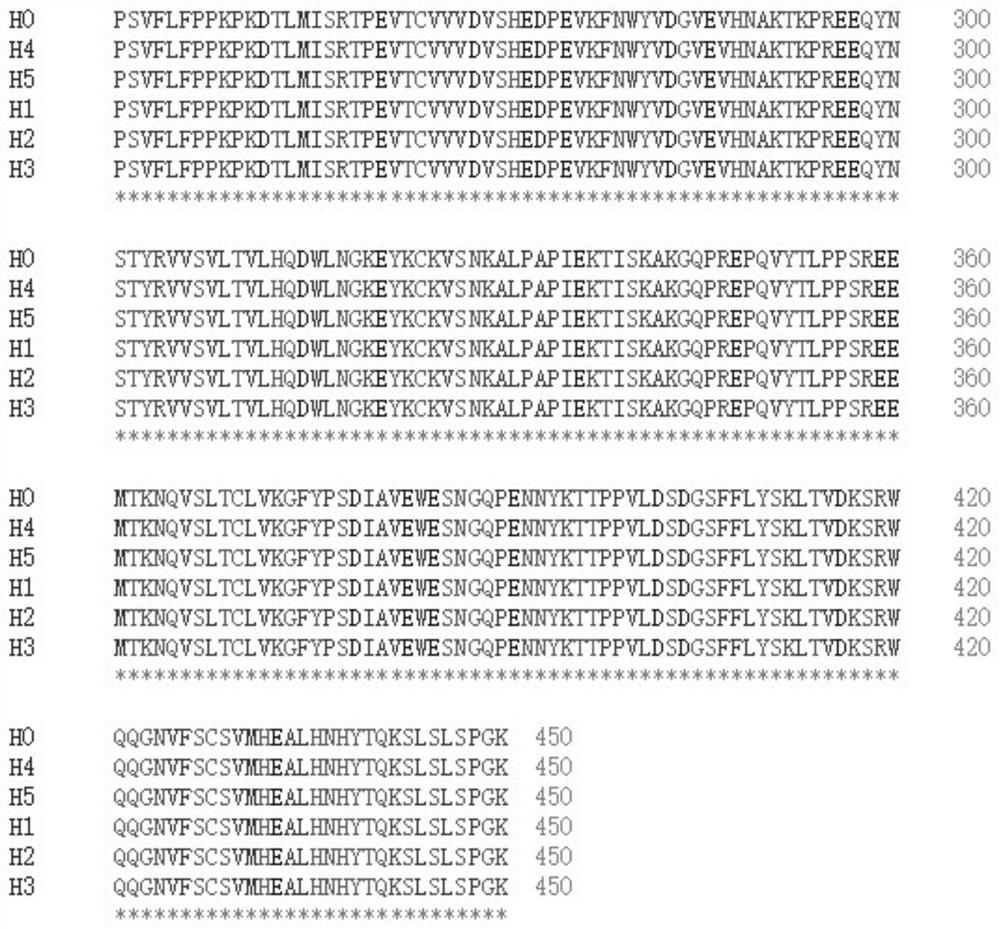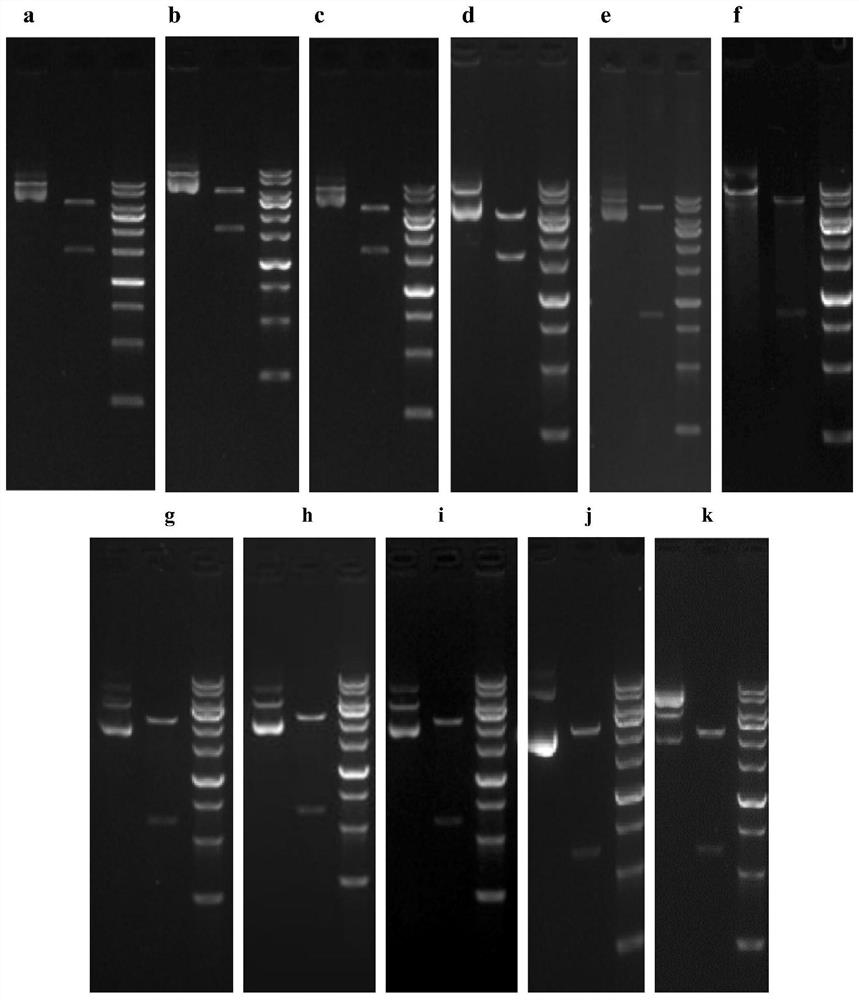Low immunogenicity anti-tnf-α humanized monoclonal antibody tcx063 and its application
A monoclonal antibody and humanized technology, applied in the fields of antibodies, applications, immunoglobulins, etc., can solve the problems of reducing the therapeutic benefit of patients, limiting antibody re-administration, and complicated drug delivery methods, achieving great application potential and value , reduce the amount of antibody medicine, and avoid the effect of reducing the efficacy of the medicine
- Summary
- Abstract
- Description
- Claims
- Application Information
AI Technical Summary
Problems solved by technology
Method used
Image
Examples
Embodiment 1
[0080] Example 1 Sequence analysis and design of humanized anti-TNF-α monoclonal antibody with reduced immunogenicity
[0081]The original sequence of Infliximab monoclonal antibody was analyzed and evaluated by commercial DNAStarTM software. The analysis results showed that the immunogenicity coefficient of Infliximab monoclonal antibody was 16.4, indicating high immunogenicity.
[0082] Find the FR segments of all light and heavy chains in the NCBI human antibody gene library, and use DNAStarTM software to perform immunogenicity analysis on the FR region sequences of human antibodies in the NCBI database, and screen out low immunogenicity human FR regions sequence, and construct a database of low immunogenicity human FR regions.
[0083] The non-antigen-binding fragments (ie, FR regions) in the variable region of the Infliximab antibody were evaluated for immunogenicity using DNAStarTM software, and highly immunogenic fragments were found. The highly immunogenic fragments w...
Embodiment 2
[0091] Embodiment 2 Construction of the expression vector of improved EF nigrosumab TCX063
[0092] According to the nucleotide sequences of the full-length heavy chain and light chain of the anti-TNF-α humanized monoclonal antibody obtained in Example 1, the restriction enzyme cleavage sites on both sides of the light chain sequence were designed as Hind III+EcoR I. The enzyme cleavage sites on both sides of the chain sequence are HindIII+EcoR I, and the full-length heavy chain and light chain full-length sequences carrying the cleavage sites were sent to Goldwisdom Corporation to synthesize the full gene sequence, and the ligation vector used for the synthesis was pUC57. Taking pEE12.4 (for heavy chain gene expression) and pEE6.4 (for light chain gene expression) as expression vectors, the above-mentioned expression vector and the synthesized gene sequence were respectively subjected to corresponding double digestion, and the obtained The target gene and expression vector we...
Embodiment 3
[0093] Example 3 Transient Expression and Purification of Improved EF Istizumab TCX063
[0094] The Escherichia coli DH5α strains carrying different heavy chain and light chain full-length gene expression vectors obtained in Example 2 were cultured, the culture was harvested, and the Qiagen UltraPure plasmid DNA purification kit was used to extract and purify the full-length heavy chain and light chain. gene expression vector. The above-purified plasmid DNA was used to transfect 293F cells using a liposome method kit from Invitrogen Company, and the transfection method was referred to the kit instructions.
[0095] 293F cells were transfected with a combination of expression plasmids carrying different light chain and heavy chain genes respectively, and the combination method is shown in Table 1. A total of 30 expression plasmid combinations were transiently expressed in 293F cells. After culturing the transfected 293F cells for 7 days, the culture supernatant was taken for a...
PUM
 Login to View More
Login to View More Abstract
Description
Claims
Application Information
 Login to View More
Login to View More - R&D
- Intellectual Property
- Life Sciences
- Materials
- Tech Scout
- Unparalleled Data Quality
- Higher Quality Content
- 60% Fewer Hallucinations
Browse by: Latest US Patents, China's latest patents, Technical Efficacy Thesaurus, Application Domain, Technology Topic, Popular Technical Reports.
© 2025 PatSnap. All rights reserved.Legal|Privacy policy|Modern Slavery Act Transparency Statement|Sitemap|About US| Contact US: help@patsnap.com



